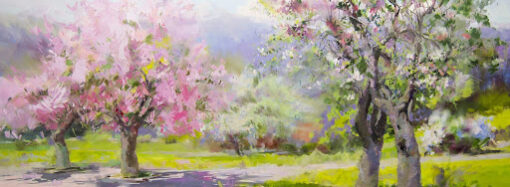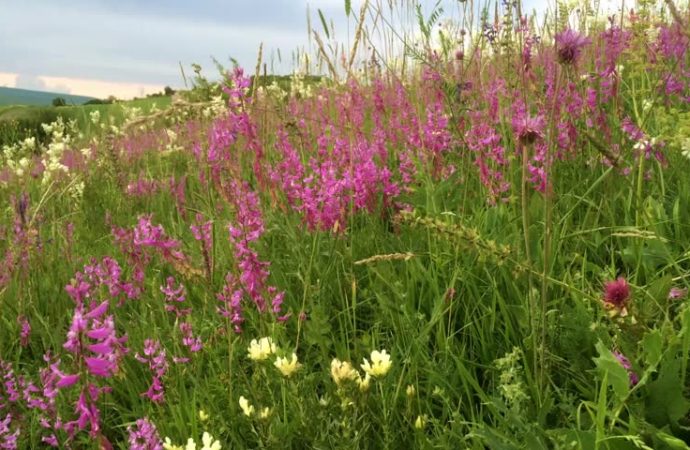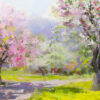Nomenclature, the other foundation of botany, should provide the names as soon as the classification is made! – Carolus Linnaeus
A. This group forms 90 percent of the kingdom plantae and more than 2,50,000 species from this family are available on earth. The various species have colonized almost every habitat on earth such as grasslands, deserts, tropical forests, mountains, artic regions, and oceans. Almost all species produce a characteristic reproductive organ containing parts such as petal, sepal, ovary, anther, and ovules. What is this group known as and what is this well-known organ called?
B. The perennial shrubs in this family are full of prickles and flowers are mostly solitary. The woody shrubs of this family can also reproduce through vegetative propagation. Most of the tree-sized species provide edible fruits such as apple (Malus pumila), pear (Pyrus communis) and P. pyrifolia), plum (Prunus domestica), and strawberry (Fragaria × ananassa). A well-known economically significant flower is known as ‘king of flowers’ and is used as a symbol of royalty in England. Which flower is this and which family it belongs to?
C. This flowering plant is a part of mint family or Lamiaceae. The plants are mostly herbs or shrubs comprising about 200 genera and 3,200 species, commonly with aromatic, herbage, quadrangular stems, and verticillate inflorescences. The flower of this plant is a tiny, mauve-blue tubule and is used in perfumery since ancient times. The name of this flower comes from latin verb ‘lavre’ and its English species is the most cultivated one. Which flower is this?
D. This plant bears a most important fruit for kitchen. It is a thorny perennial shrub from citrus family. The fruit is a thick rind hesperidium which is dark yellow when is fully ripe. It is also a rich source of flavonoids and Ascorbic Acid (Vitamin C). Owing to its tart flavor, it is widely used in flavoring cakes and drinks. The plant thrives well in Mediterranean climate and its flowers are yellowish white bearing a tangy fragrance. Which plant and fruit is this?
E. A tropical, ornamental shrub native to southeast Asia and North Africa, this plant bears pentamourous flowers that possess five petals and sepals. Its most prominent sub-continent species is perennial and possesses antioxidants. The fleshy red calyx is used for the preparation of jellies, jams, drinks, cold and warm teas. The flowers are significant in Indian mythology and are used to propitiate goddess Kali and lord Ganesha. What is the name of this flower?
F. Most of the flowers of this genus are from the family Oleaceae and are of white color. Its plants are shrubs, climbers, or trailers. The number of species range from 200 to 250. Identified by its exotic and sensuous fragrance, the flower is used to prepare essential oils, perfumes, cosmetics, and garlands. The name of this flower is of Arabic origin and ideal climate to cultivate it is mild winter or warm summer. Which fragrant flower is this?
G. This family of plants bears white or yellow flowers. The stems of these annual herbs are usually divided into nodes and internodes, and has raceme or corymb inflorescence. Vegetables such as Brassica oleracea botrytis (cauliflower), Brassica oleracea capitata (Cabbage), Raphanus sativus (radish) etc are form this family. The leaves, fruits, and seeds of these plants possess a pungent taste. Due to this pungent taste, black seeds of one of these plants is used for extracting cooking oil. These seeds are also used in pickles and sauces. What is this plant called and which is this family of plants?
H. It is a small shrub with leathery, lanceolate leaves that produces a beverage consumed by more than half of the world’s population. A tannin (13 to 18%), volatile oil, and an alkaloid theine (2-5%) is present in leaves of this shrub. Originated in China, these leaves release their alkaloids when infused in hot water producing invigorating effect as a beverage. Which leaves are these?
Answers
A. Angiosperms
B. Rose and Rosaceae
C. Lavender flower
D. Lemon
E. Hibiscus
F. Jasmine
G. Mustard plant and Brassicaceae formerly known as Cruciferae
H. Tea leaves


















Leave a Comment
Your email address will not be published. Required fields are marked with *